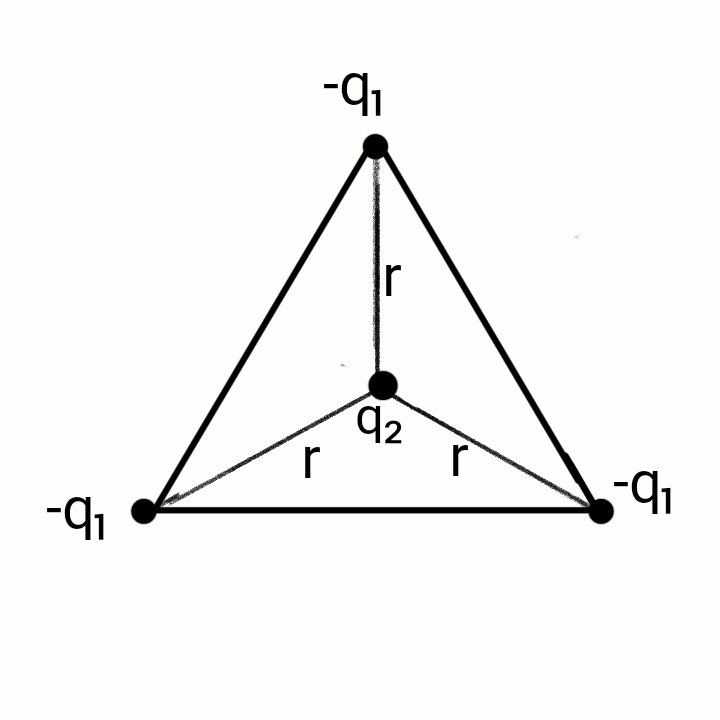Vibration in Charged Particle

Three equal negative charges, - each, form the vertices of an equilateral triangle. A particle of mass m and a positive charge is constrained to move along a perpendicular to the plane and through it's center which is at a distance r from each of the negative charges as shown in the figure. The whole system is kept in gravity free space.
The time period of vibration of the particle for small distance from the equilibrium position can be expressed as
T =
then A+B+C equal to ?
The answer is 10.
This section requires Javascript.
You are seeing this because something didn't load right. We suggest you, (a) try
refreshing the page, (b) enabling javascript if it is disabled on your browser and,
finally, (c)
loading the
non-javascript version of this page
. We're sorry about the hassle.
Differential equation for motion:
− 4 π ϵ 0 ( r 2 + y 2 ) 3 / 2 3 q 1 q 2 y = m y ¨
Approximation for small y :
− 4 π ϵ 0 r 3 3 q 1 q 2 y = m y ¨ − 4 π m ϵ 0 r 3 3 q 1 q 2 y = y ¨
This corresponds to simple harmonic motion with the following angular frequency:
ω = T 2 π = 4 π m ϵ 0 r 3 3 q 1 q 2 T = 2 π 3 q 1 q 2 4 π m ϵ 0 r 3 = 4 π 3 q 1 q 2 π m ϵ 0 r 3